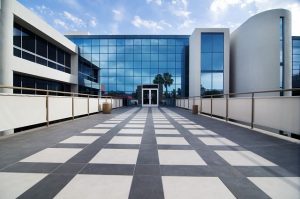
A building that stands without being commissioned costs more money in the long run. Commissioning helps easily manage the maintenance of a building along with equipment lasting longer and projects not stalling or there being callbacks on construction.
One primary consideration when it comes to new building construction and commissioning is making sure that the building is energy efficient. Benefits of energy efficiency include less damaging effects on the environment, money saving, and better performance. A building that stands without being commissioned costs more money in the long run. Commissioning helps easily manage the maintenance of a building along with equipment lasting longer and projects not stalling or there being callbacks on construction. Keep reading below to gain a full understanding of what commissioning is and why you should invest in this if you’re constructing a new building.
Definition of Commissioning
Commissioning involves making sure that a building complies with safety codes as far as HVAC and lighting systems. A project team comes along and makes sure that these systems are running efficiently. The project team is there for three stages of this process which are: design, construction, and operation. As far as a building that’s not new, a project team can analyze and measure if the existing systems need improvement. A building needs this kind of inspection because, without it, utility bills may be high, repairs could be expensive, and anyone visiting the building may make complaints.
Commissioning for New Construction
Assessing a new building takes a lot of work but also creates a lot of opportunities. It is best to involve a commissioning agent before the construction phase because they can detect problems right away. Another benefit is that as a new business owner has their equipment installed, immediate testing could occur to make sure that everything is up-to-par.
Older Building Commissioning
Older buildings have to be recommissioned, meaning that testing and evaluating for a building’s efficiency happened already but needs redoing. “Retro-commissioning” is a term that means an older building never had a commission. Advantages of checking on an old building include energy reduction, the building operating more efficiently, and people that occupy the space become more comfortable. For example, if an area is way too hot, commissioning may involve finding ways to cool the air quality
Five Phases of Commissioning
1) Pre-design. The design team is selected. Owner of the building also picks a commissioner and goes over the building’s roles and qualifications.
2) Design. A blueprint is ready and available. Owner of the building recruits a contractor. Official commission plans outlined.
3) Construction. The contractor officially begins building with start-up equipment, and the commission plan takes effect.
4) Acceptance. The owner accepts the building layout, and additional test run by the project team to ensure that there are no deficiencies.
5) Post-Acceptance. The owner has to make sure that they regularly maintain their building.
Questions? Mahogany Inc. Is Here to Help
Whether you are ready to purchase your new front door or still have some more questions, Mahogany Inc. has your back. Call us at 410-727-0334 with any questions and speak to one of our licensed professionals. To see examples of our work or to gain inspiration for your next project, follow us on Facebook, Twitter, and Pinterest.
